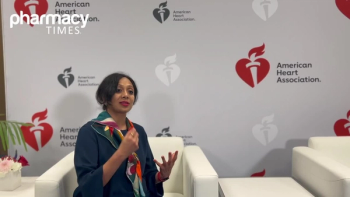
The Power of Social Media in Pharmacy in the Age of COVID-19
Key Takeaways
- Social media is vital for professional networking and information sharing in pharmacy, especially during the COVID-19 pandemic.
- The Pharmacist Moms Group has grown to over 35,000 members, becoming a leading and active pharmacy community on Facebook.
Pharmacist Moms Group founder Suzanne Soliman, PharmD, BCMAS, speaks on the power of social media in the field of pharmacy in the age of COVID-19.
Social media has the ability to shape perspectives on news and provide opportunities for connecting with others. During the coronavirus disease 2019 (COVID-19) pandemic, the need to connect with others has taken on a new form, accelerating the need for professionals and organizations to interact with potential customers through social media platforms.
This reality is no different for the field of pharmacy, which has had a strong network of professionals on social media for years. One organization in particular, the
On April 24, Pharmacist Moms Group founder Suzanne Soliman, PharmD, BCMAS, spoke on the power of social media in the field of pharmacy at the University of Illinois College of Pharmacy for the annual Albert Ebert lecture.1
Soliman explained how her initial group of 50 friends turned within a month to a group with 1000 members. Today, it is the largest group of pharmacists within the United States.1
“We had a partnership in 2018 with Facebook after they reached out to me because we were one of the most active groups on Facebook in the world,” Soliman said during her lecture.1
Soliman explained that millennials who grew up using social media now expect to be able to connect with others in their field, as well as to get their news and even conduct business, using platforms such as Facebook.1
Soliman cited a study conducted at the Daniel K. Inouye College of Pharmacy at the University of Hawaii, which showed that in 2019, most current pharmacy students (86%) at the college were of the millennial generation, with approximately 91% to 93% of students using at least 1 social media platform. The students also reported that they used social media regularly, with 51% using Facebook, 52% using Instagram, 32% using Snapchat, and 6% using Twitter multiple times daily.2
“The Pharmacist Moms Group is not just a really large group, but we’re also the most active group. We’ve had over 6 million posts this year in our group. Members are extremely active and constantly talking about various topics related to pharmacy and other issues,” Soliman said during her lecture.1
There are also multiple social media platforms available to use, with each platform garnering a certain audience.1
“Based on various ages, some forms of social media are more popular than others. Specifically, for example, a majority of Snapchat users are under 25 years old, at 73%. Only 3% of Snapchat users are over the age of 65. So, depending upon the site, you will be attracting a specific audience,” Soliman explained.1
With this knowledge, there is a decision that individuals and organizations are making every day regarding their own activity on social platforms.
“You have a choice when it comes to social media: You can either step forward into the growth, or you can step back into safety and not get involved,” Soliman said.1
Yet, the decision to engage in social media can provide real world results professionally in the field of pharmacy.1
“Once we can change the perception of what pharmacists do, we can expand our scope of practice. And also, through connecting, pharmacists can reach out to a physician or a nurse and can quickly broaden their interprofessional connections. After making that connection, that individual can then reach out to pharmacists and let them know that a pharmacist is needed on their team when a position becomes available,” Soliman said.
This opportunity to broaden horizons can not only lead to greater career growth opportunities, but by allowing patients to see pharmacists as real people through social media platforms, patient outcomes can be improved as well.1
“We know that improved perception can improve outcomes, so if patients see the pharmacist as a human, outcomes can improve as well. When pharmacists can relate to a patient and they can see pharmacists as real people, that can change their perceptions of what a pharmacist can do,” Soliman explained.
Such opportunities for growth on social media within the field of pharmacy are also being accelerated by the COVID-19 pandemic, with more people now than ever looking for answers and seeking guidance. Through social media, pharmacists can show patients a positive way forward.1
“Now, we’re right at the forefront where things could change because pharmacists are able to provide COVID-19 testing. We need to let people know that pharmacists can do this testing as well as doctors, which is a step forward in the right direction for the pharmacy profession. So now, with social media, we have the chance to get our voices out there,” Soliman said.
REFERENCES
- Soliman S. The Power of Social Media in Pharmacy. In: Albert Ebert Lecture at the University of Illinois College of Pharmacy; April 24, 2020.
- Prudencio J. Pharmacy Students’ Perspectives of Social Media Usage in Education. Hawai’i Journal of Health & Social Welfare. 2019;78(9):297—301. doi: PMC6731182.
Newsletter
Stay informed on drug updates, treatment guidelines, and pharmacy practice trends—subscribe to Pharmacy Times for weekly clinical insights.















































































































































































































